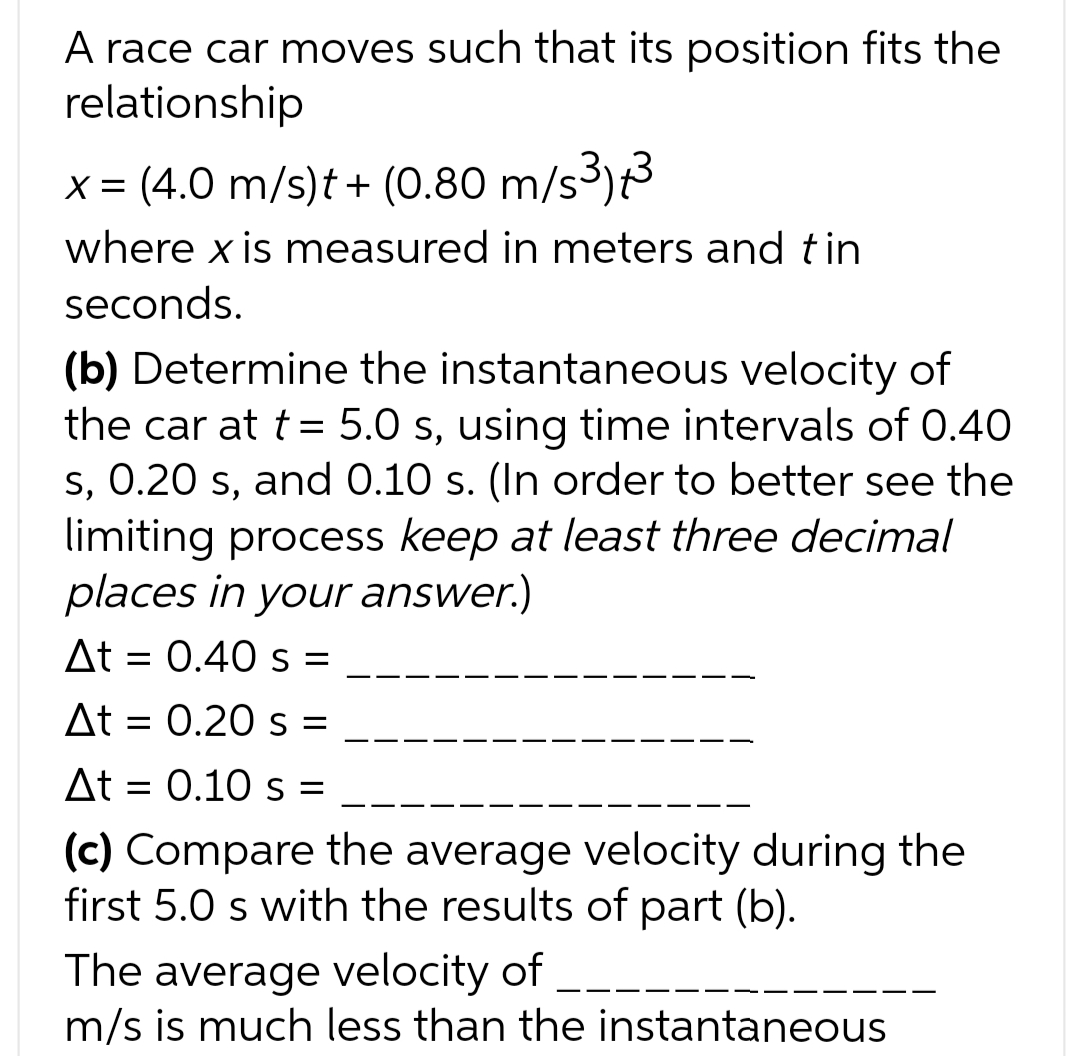A race car moves such that its position fits the relationship x = (4.0 m/s)t + (0.80 m/s³) +³ where x is measured in meters and tin seconds. (b) Determine the instantaneous velocity of the car at t = 5.0 s, using time intervals of 0.40 s, 0.20 s, and 0.10 s. (In order to better see the limiting process keep at least three decimal places in your answer.) At = 0.40 s = At = 0.20 s= At = 0.10 s= (c) Compare the average velocity during the first 5.0 s with the results of part (b). The average velocity of m/s is much less than the instantaneous
Displacement, Velocity and Acceleration
In classical mechanics, kinematics deals with the motion of a particle. It deals only with the position, velocity, acceleration, and displacement of a particle. It has no concern about the source of motion.
Linear Displacement
The term "displacement" refers to when something shifts away from its original "location," and "linear" refers to a straight line. As a result, “Linear Displacement” can be described as the movement of an object in a straight line along a single axis, for example, from side to side or up and down. Non-contact sensors such as LVDTs and other linear location sensors can calculate linear displacement. Non-contact sensors such as LVDTs and other linear location sensors can calculate linear displacement. Linear displacement is usually measured in millimeters or inches and may be positive or negative.
Please send me answer of this question within 10 min i will give you like sure sir

Step by step
Solved in 3 steps with 2 images









